Chapter 1. The Evolution of Teams
Think of a team that you were a part of in the past. Can you remember when you joined or when you left that team? Many of us aren’t on the same teams forever—our team experiences have beginnings as well as endings. And other people might come and go from our teams in the middle of all that. An ecocycle, like the example shown in Figure 1-1, is a useful metaphor for thinking about the evolution of a team and how it changes over time.
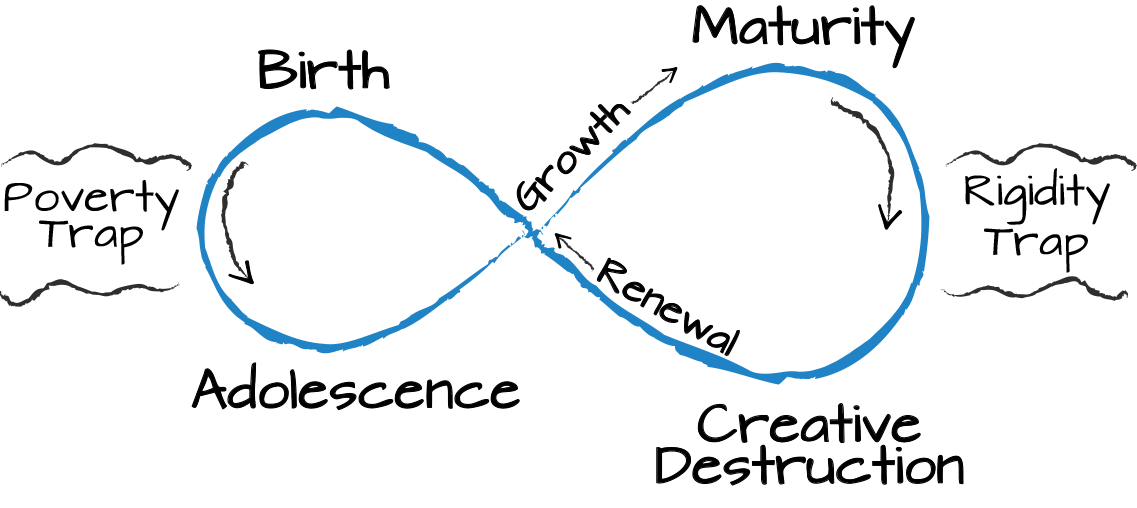
Figure 1-1. An ecocycle based on the adaptive cycle by Lance H. Gunderson and C.S. Holling, Panarchy; and Keith McCandless, Henri Lipmanowicz, and Fisher Qua, Liberating Structures
Here’s a short example from forestry to illustrate the general concept of an ecocycle that I will then relate to dynamic reteaming. In the Los Padres National Forest near where I live in California, we can witness the ecocycle of oak trees firsthand. At a very high level it works like this: Acorns drop from the trees. They find their way underground and take root–like a birth phase. Next is the adolescence phase, in which the young oak trees grow and grow and grow. Then there is an accumulation taking place as the forest becomes denser. The trees that thrive get really thick and develop canopies—they are in the maturity phase. The trees that do not do well might never get to adolescence and will instead struggle and probably die off. This is akin to being in a poverty trap, or a situation where there is a failure to thrive.
After a while, in a mature forest, the trees might get brittle and their growth might be slowed. It’s like a rigidity trap, where the life appears stifled or not as expansive. It could even appear stagnating. All of this is the opposite of thriving. In times of drought it can be even more pronounced, incredibly fragile, and even dangerous. Just a small spark can cause a catastrophic wildfire and burn the trees to the ground. This is the place in the ecocycle that evokes some kind of disruption or destruction.
Researchers who apply this ecocycle concept beyond forestry sometimes call the phase after maturity creative destruction, a term coined by economist Joseph Schumpeter in 1950.1 It’s the death and disturbance phase. But nature is clever. Through this grand disruption, it finds new beginnings. Wildfires enable the release of new seeds and other matter that catalyzes incredible renewal. What takes root and survives will start this ecocycle again, regenerating the forest and the life around it in all kinds of interesting ways until the next time a large disturbance or even a catastrophe happens.
So how does a forestry ecocycle relate to dynamic reteaming? I think it helps to provide an awesome context for it. Let me explain. But first a caveat—keep in mind that this dynamic reteaming ecocycle is only a metaphor. Like forestry ecocycles, it’s not meant to be a prescriptive path for all teams or organizations.2 I view the dynamic reteaming ecocycle as a sensemaking tool. Inherent in this metaphor is an evolutionary approach to teams instead of a predictive or linear one.
I joined AppFolio, the second startup I was a part of, in 2007 as the tenth employee. I was on the first engineering team. When I joined, that team was more or less in its birth phase, depicted in Figure 1-2.
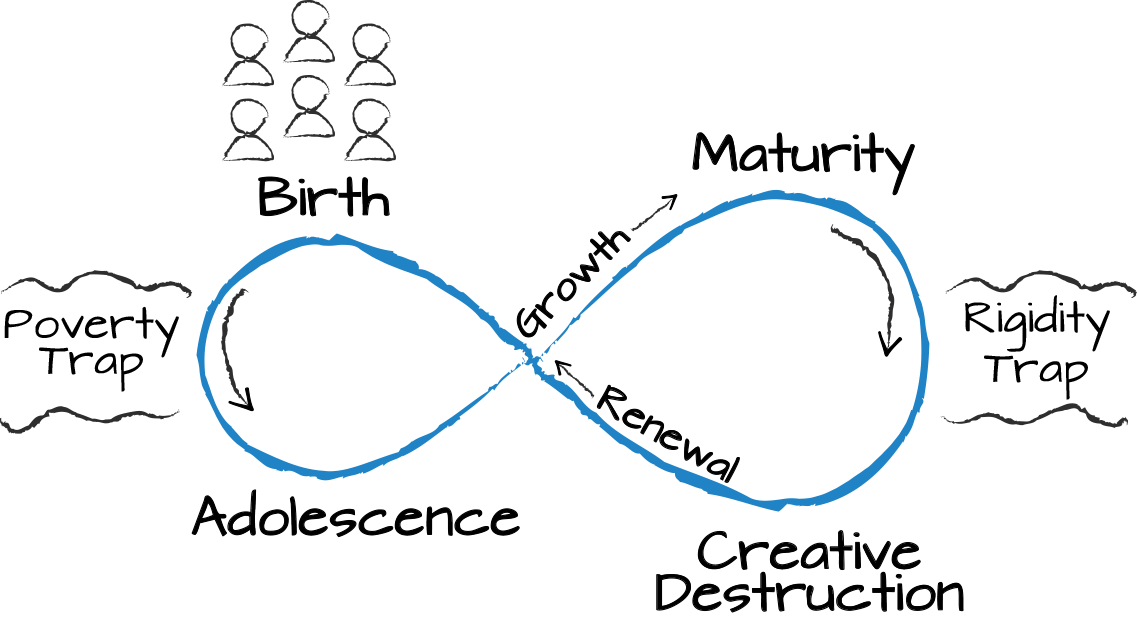
Figure 1-2. A new team
After a while, that first team gained more experience and got bigger. It grew into adolescence and continued to grow. The hiring ramped up. Team members were added on gradually using the dynamic reteaming pattern that I call one by one, described in Chapter 5. You could say that particular team was in its maturity phase, like in Figure 1-3.
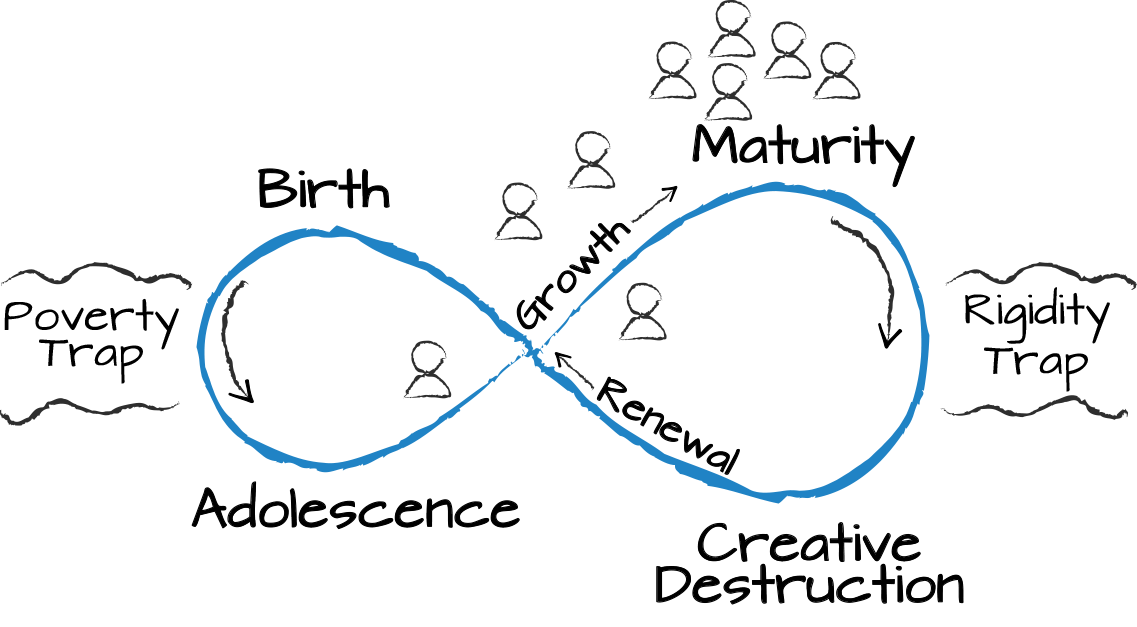
Figure 1-3. One-by-one addition of new team members
Time passed, and that team felt too big for many of us. It became very difficult for us to make decisions together. Meetings started taking forever. It was as if we were stagnating. Something had to change. This is the rigidity trap idea shown in Figure 1-4.
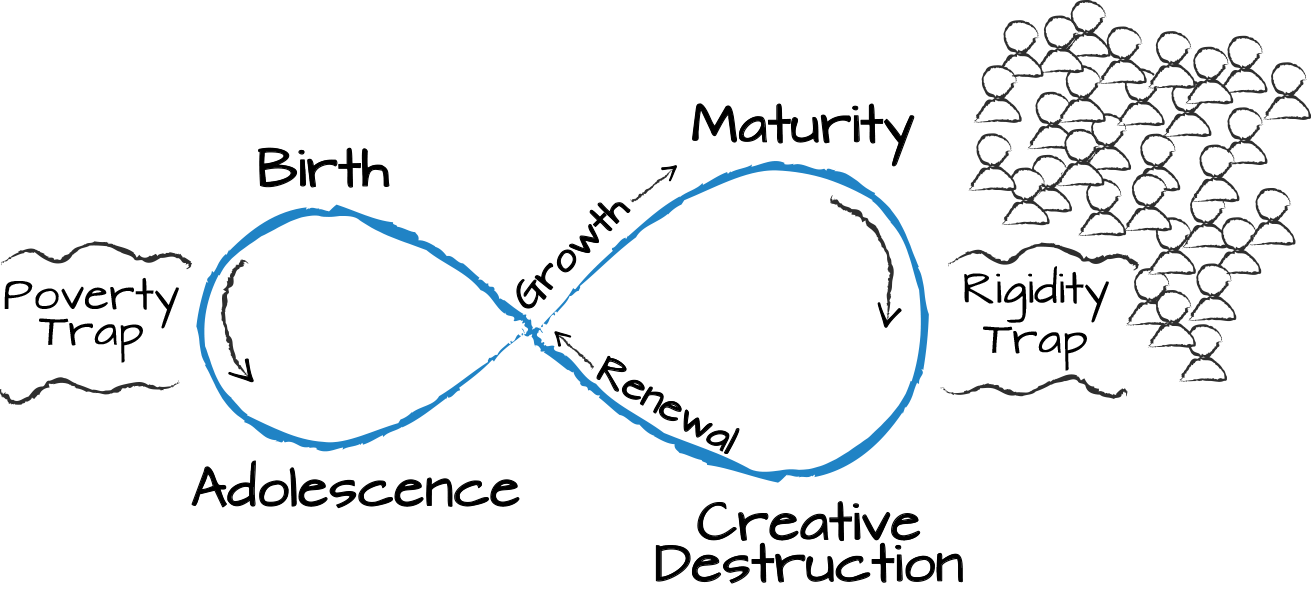
Figure 1-4. A team is that growing so big is probably going to fall into a rigidity trap or stagnate
After a while it got even more challenging, and we realized that we needed to change our team composition. We needed to disrupt ourselves. At that point, we essentially dynamically reteamed into two new teams. Following that structural split, our people started again as two brand-new teams, and then the cycle continued, as shown in Figure 1-5. We focused on different areas of work. We reinvented our meetings. Things felt different and fresh.
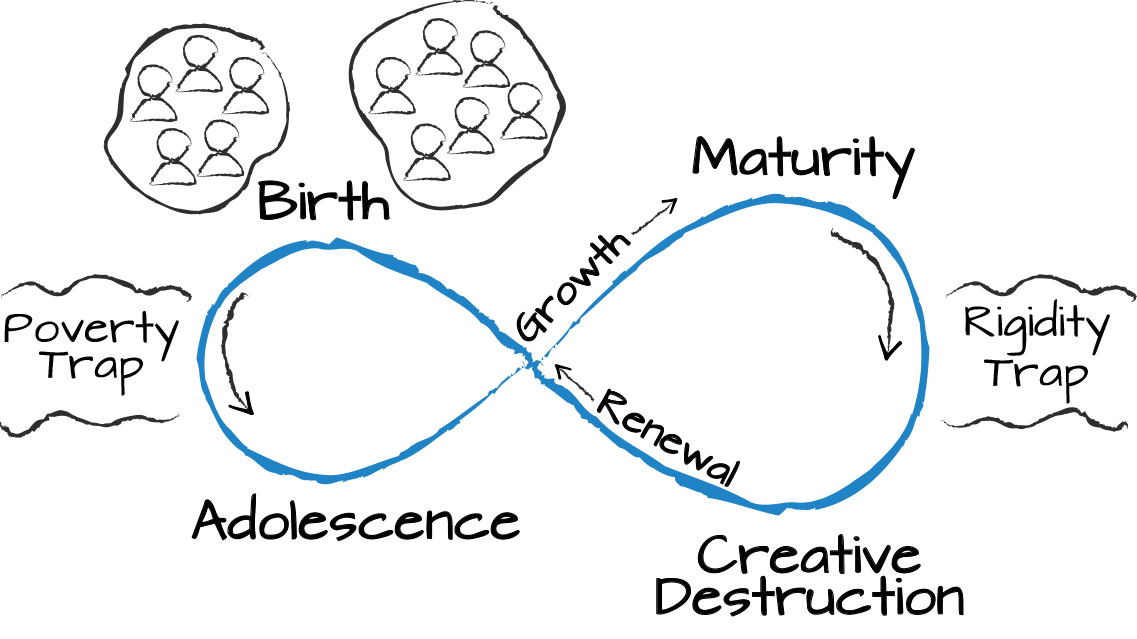
Figure 1-5. A team that grew big and then split in half and is now two teams
Not all teams are fortunate enough even to grow big and split, or get anywhere near a maturation phase. A team that doesn’t succeed might be thought of as getting stuck in a poverty trap. Maybe the chemistry is off, and the people together on the team don’t gel. So, the team dissolves, or you disband it. It could also be that the product the team is working on doesn’t take off. From my perspective, the Expertcity marketplace product I described in the beginning of this book was in a poverty trap. No one would buy it! So we quickly started a new team off to the side, using what I call the isolation pattern, described in Chapter 7, and the team ecocycle started anew for those people. You might view the poverty trap as an early exit point out of the dynamic reteaming ecocycle.
The nature of ecocycles is that they are multilevel, which brings us to the concept of panarchy.
Panarchy
Extending the ecocycle metaphor even further, let’s entertain it as being present simultaneously on multiple levels of context. In the English language, the word team itself is lexically ambiguous. When I say team, I might be referring to the immediate, cross-functional software development team that I’m on, or I could be referring to my company as a whole. I could even be referencing some level in between—such as referring to my R&D organization as my team. The concept of team is multilevel and multidimensional.
This reminds me of a concept related to the ecocycle, an idea called panarchy, which is depicted visually by multiple ecocycles at different scales. Authors Gunderson and Holling describe panarchy as “linkages between systems dynamics and scale,” and they elaborate on that in a cross-disciplinary fashion in their 2002 book called Panarchy: Understanding Transformations in Human and Natural Systems. The intent of their work is to develop a cross-scale, integrative theory to help people understand global transformational, adaptive systems in nature, economics, and organizations. The name panarchy pays homage to the Greek god Pan, who they say “captures an image of unpredictable change and […] notions of hierarchies across scales to represent structures that sustain experiments, test results, and allow adaptive evolution.”3
Applying panarchy to dynamic reteaming brings the idea that we are essentially going through multiple, relatively unpredictable dynamic reteaming ecocycles concurrently, at different levels and at different speeds or dynamics. When thinking of dynamic reteaming, I apply this concept by imagining three levels of panarchy: the individual level, the team level, and the company level. I’m sure you can imagine other levels in between and beyond—think about how COVID-19 impacted us at the world level and influenced all the way down and around the levels. For the sake of simplicity and focus, I illustrate this concept using only three levels, as depicted in Figure 1-6.
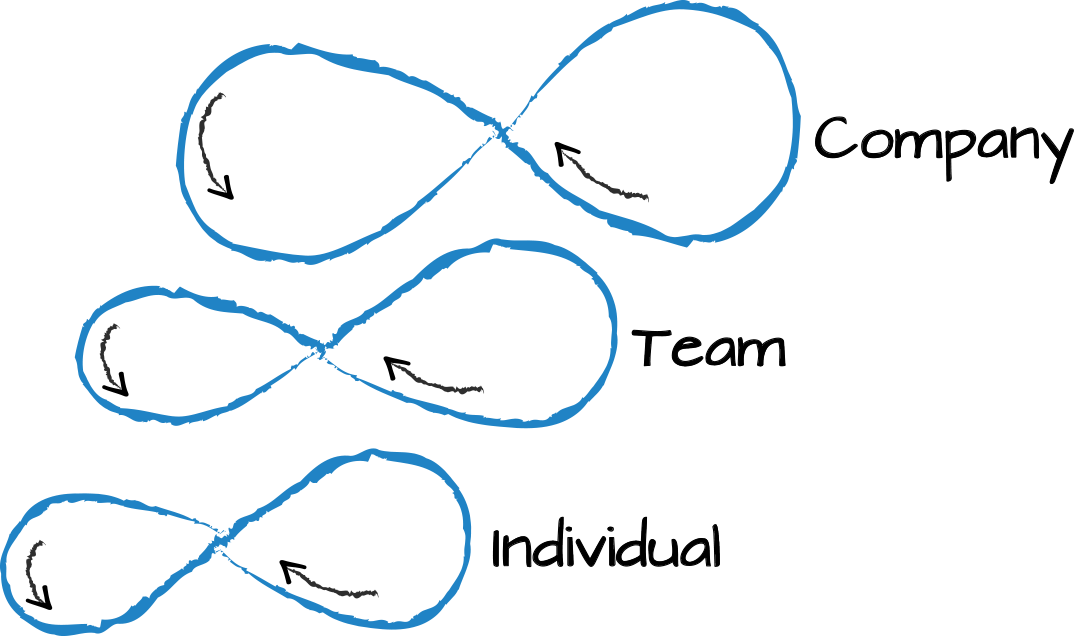
Figure 1-6. Dynamic reteaming happens on multiple levels like the concept of panarchy (Gunderson and Holling, Panarchy, 2002)
At any time, we as individuals are going through our own dynamic reteaming ecocycles. It’s like when you join a company. You’re in the birth phase of your individual experience there, and will continue on through your ecocycle of experience until some type of event occurs and you are disrupted. Maybe others join your team and that renews your experience. Maybe you change teams. Maybe the work changes. Maybe you change roles in your company. You might even leave the company. It could be that the changes happen to you without your input. You might even catalyze creative destruction, or sometimes it seems to just emerge. There are lots of possibilities.
We also go through the ecocycle at a team level. When a team is created it’s in the birth phase. As time passes on it might grow and change in adolescence. Whether or not the team gets the addition of new people, with time it might feel as if it is becoming mature. Then at some point the team might go through its own transformation and dynamically reteam in a myriad of patterns. In essence, teams have their beginnings, and as time passes, these teams might thrive, grow, change, die, and so on.
As we get more macro with our application of panarchy to dynamic reteaming, we look at company entities themselves. They too can be viewed as going through an ecocycle. I was at my first startup, Expertcity, for eight years. I was there as the company grew from 15 to about 700 employees. I was there around birth and left at some point of maturity. The company was disrupted when acquired by Citrix in 2004, and the whole organization changed and reassembled with a newly stated identity and leadership. We were called Citrix Online, a separate and, for a while, independent division of that company. So, theoretically, it started over in the ecocycle. In 2017, this team was acquired by another company, LogMeIn, and morphed into that identity. This is the merging pattern, described in Chapter 8.
According to Gunderson and Holling, the speed at which changes occur in ecocycles differs based on scale. The authors write that when large, the ecocycle goes slower, and it goes more rapidly at a smaller scale, like at the team level. The slow pace of a large-scale ecocycle suggests that if you can keep things stable at the company level, then you can endure more dynamic reteaming at the team level due to that contextual anchor. The authors note, “In essence, larger and slower components of the hierarchy provide the memory of the past and of the distant to allow recovery of smaller and adaptive cycles.”4 The role of story and the connectedness to shared experience and purpose at the company level might just be the glue that keeps organizations with dynamic teams together. I can see that as true from my experiences at AppFolio. We had strong traditions, such as representing company milestones on whitewater rafting oars that we’d all sign, which related back to two whitewater rafting trips taken by team members early in the company. We would have repeated events at the company level that provided a rhythm, such as an annual guacamole-making competition on Cinco de Mayo. The traditions, culture, and symbols of the larger entity gave continuity to the smaller team entities.
The stories in this book illustrate the complex nature of individual-, team-, and company-level changes that many of us experience in the software industry. The five patterns show the structural and transformational nature of the changes. If I were to describe the essence of dynamic reteaming, it is defined as a myriad of changes catalyzed or occurring on multiple levels, for multiple reasons, and expressed in multiple patterns. The biggest challenges to dynamic reteaming, however, are related to human factors, which we will cover throughout this book. You can’t just install reteaming into your company without respect and consideration for the people. Before we get into that, let’s take a look at some basic definitions of teams and apply them to dynamic reteaming.
1 Gunderson and Holling, Panarchy, 34.
2 Gunderson and Holling, Panarchy, 51.
3 Gunderson and Holling, Panarchy, 5.
4 Gunderson and Holling, Panarchy, 20.
Get Dynamic Reteaming, 2nd Edition now with the O’Reilly learning platform.
O’Reilly members experience books, live events, courses curated by job role, and more from O’Reilly and nearly 200 top publishers.

